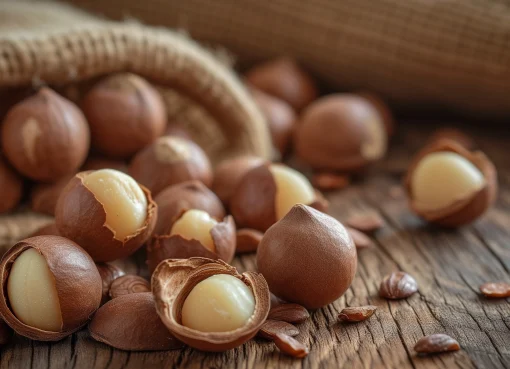Mango Pudding: Indulge in the Exotic, Creamy Delight for Ultimate Satisfaction

Mango pudding is a luscious and creamy dessert that offers a perfect blend of sweetness and tropical flavors. This exotic treat, popular in many parts of the world, especially in Asia, is beloved for its smooth texture and vibrant taste. In this article, we will explore the history, nutritional benefits, preparation methods, and various ways to enjoy mango pudding, revealing why it is a dessert that promises ultimate satisfaction.
The Allure of Mango Pudding

Mango pudding, with its rich history and widespread popularity, has become a staple dessert in many cultures. The combination of ripe mangoes and creamy pudding creates a delightful dessert that is both refreshing and indulgent.
Historical Roots
The origins of mango pudding can be traced back to the culinary traditions of Southeast Asia, particularly in countries like Thailand, India, and China. Mangoes, known as the “king of fruits,” have been cultivated in these regions for centuries and are celebrated for their sweet, juicy flesh and distinct aroma. The concept of mango pudding likely evolved from traditional mango-based desserts that utilized the abundant fruit in creative and delicious ways.
Global Popularity
Mango pudding has gained international acclaim, becoming a favorite dessert in many parts of the world. Its popularity in Western countries can be attributed to its introduction through Asian restaurants and its inclusion in various fusion cuisines. The universal appeal of mango pudding lies in its simplicity, vibrant flavor, and the natural sweetness of mangoes, making it a delightful treat for all ages.
The Nutritional Benefits of Mango Pudding
Mango pudding is not only a delightful dessert but also offers several nutritional benefits. By incorporating fresh mangoes into the pudding, you can enjoy a healthy treat that satisfies your sweet tooth while providing essential nutrients.
Key Nutrients in Mango Pudding
- Vitamin C: Mangoes are rich in vitamin C, an essential nutrient that supports the immune system, promotes healthy skin, and aids in the absorption of iron. A serving of mango pudding can contribute significantly to your daily vitamin C intake.
- Vitamin A: Mangoes are an excellent source of vitamin A, which is crucial for maintaining healthy vision, skin, and immune function. This vitamin also acts as an antioxidant, protecting the body against free radical damage.
- Fiber: Mangoes contain dietary fiber, which aids in digestion and helps maintain a healthy gut. Fiber also promotes satiety, making mango pudding a satisfying dessert that can help regulate appetite.
- Potassium: Mangoes are a good source of potassium, an essential mineral that helps regulate blood pressure, fluid balance, and muscle contractions. Including mango pudding in your diet can support cardiovascular health.
- Antioxidants: Mangoes are packed with antioxidants, such as beta-carotene and polyphenols, which protect the body from oxidative stress and reduce the risk of chronic diseases.
How to Make Mango Pudding

Making mango pudding at home is a straightforward process that requires a few simple ingredients and minimal preparation. Here is a classic recipe to get you started.
Ingredients
- Ripe Mangoes: 2 large mangoes, peeled and cubed
- Gelatin or Agar-Agar: 1 tablespoon (for a vegetarian option, use agar-agar)
- Sugar: 1/4 cup (adjust to taste)
- Water: 1/2 cup
- Coconut Milk or Whole Milk: 1 cup
- Lime Juice: 1 tablespoon (optional, for added tanginess)
Instructions
- Prepare the Mango Puree: In a blender, combine the cubed mangoes and lime juice (if using). Blend until smooth to create a mango puree. Set aside.
- Dissolve the Gelatin or Agar-Agar: In a small saucepan, combine the gelatin or agar-agar with water. Let it sit for a few minutes to bloom. Heat the mixture over low heat, stirring constantly, until fully dissolved.
- Mix the Ingredients: In a large bowl, combine the mango puree, dissolved gelatin or agar-agar, sugar, and coconut milk or whole milk. Stir well to ensure all ingredients are thoroughly mixed.
- Pour into Molds: Pour the mixture into individual serving molds or a large dish. Refrigerate for at least 4 hours, or until the pudding is set.
- Serve and Enjoy: Once set, unmold the mango pudding and serve chilled. Garnish with fresh mango slices, mint leaves, or a dollop of whipped cream for an extra touch of elegance.
Variations of Mango Pudding

While the classic mango pudding is delightful on its own, there are numerous variations that you can try to add a unique twist to this beloved dessert.
Mango Coconut Pudding
For a tropical twist, substitute coconut milk for whole milk in the recipe. The coconut milk enhances the tropical flavor of the mangoes and adds a rich, creamy texture to the pudding. Garnish with toasted coconut flakes for added crunch and flavor.
Mango Sago Pudding
Mango sago pudding is a popular variation that includes small tapioca pearls, known as sago. Cook the sago pearls according to package instructions and add them to the mango pudding mixture before setting it in the refrigerator. The sago pearls add a fun, chewy texture that complements the smooth pudding.
Mango Chia Pudding
For a healthier option, incorporate chia seeds into your mango pudding. Combine the mango puree with coconut milk and chia seeds, and let the mixture sit overnight in the refrigerator. The chia seeds will absorb the liquid and create a thick, pudding-like consistency. This version is high in fiber and omega-3 fatty acids.
Mango Pudding Parfait
Layer mango pudding with granola, fresh berries, and Greek yogurt to create a visually appealing and delicious parfait. This variation is perfect for breakfast or as a refreshing snack, combining the creamy pudding with crunchy and tangy elements.





